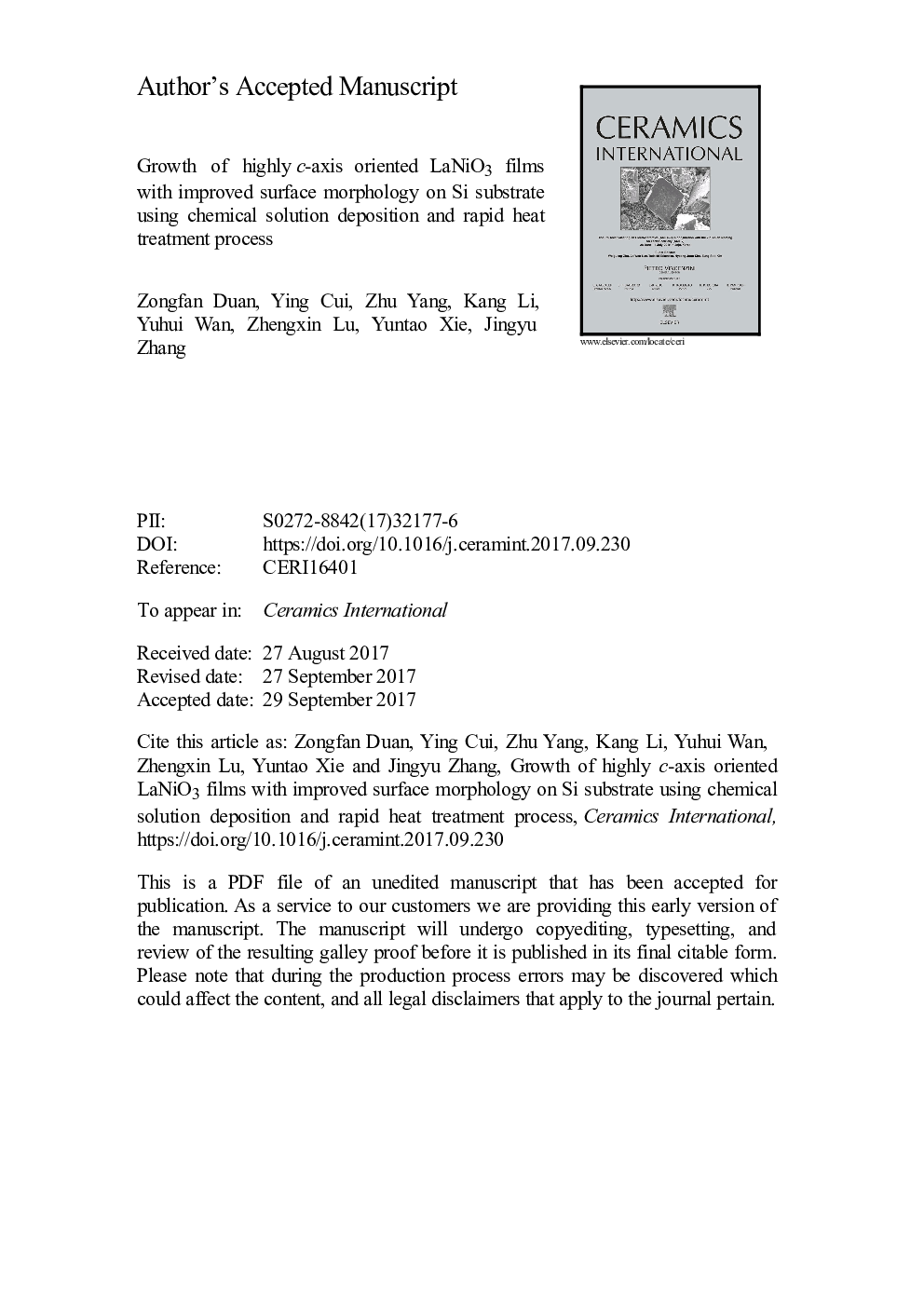| Article ID | Journal | Published Year | Pages | File Type |
|---|---|---|---|---|
| 7889216 | Ceramics International | 2018 | 30 Pages |
Abstract
LNO (LaNiO3) thin films were directly deposited onto Si substrates with a thin layer of amorphous natural oxide (SiO2) using three different precursor solutions. Effects of the constitution of precursor solution and the annealing heating rate on the surface morphology and the orientation were investigated. The LNO film derived from the mixture of a methanol solvent and an acetylacetone chelating agent had the flat surface with no cracks and pinholes. The heating rate of rapid annealing process had a critical effect on the oriented growth of the LNO film, and its c-axis orientation degree increased with the annealing heating rate. The LNO film with the heating rate of 40 â/s exhibited the highest degree of c-axis orientation (99.57%) and the lowest resistivity (9.35 à 10â4 Ω cm). It would be a potential bottom electrode and/or seed layer to integrate perovskite-type films on it for functional devices.
Related Topics
Physical Sciences and Engineering
Materials Science
Ceramics and Composites
Authors
Zongfan Duan, Ying Cui, Zhu Yang, Kang Li, Yuhui Wan, Zhengxin Lu, Yuntao Xie, Jingyu Zhang,
